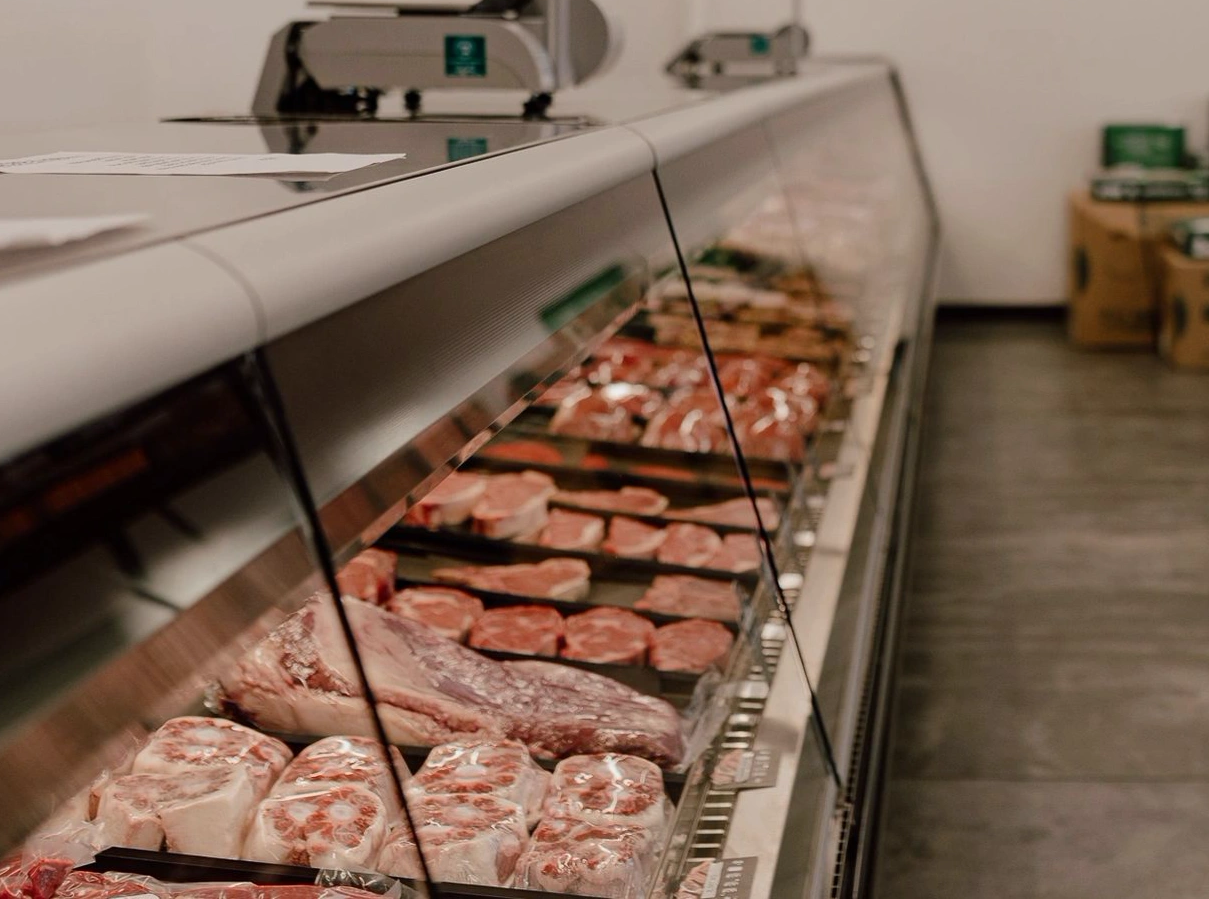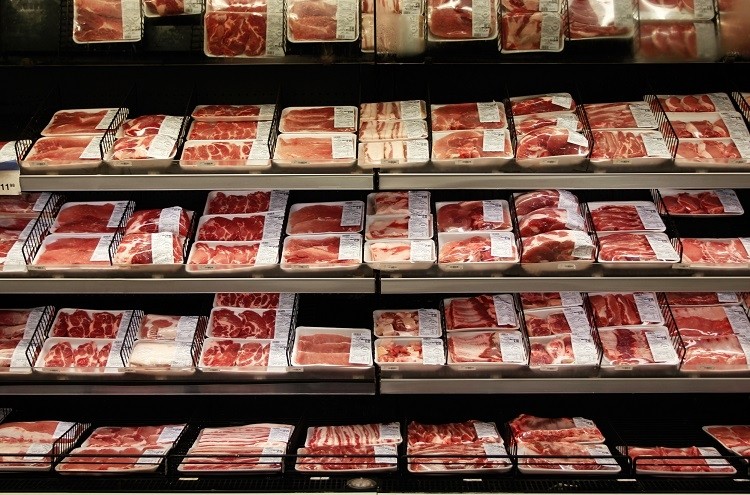Bagley Farms Meat Market Edwardsville IL: Your Trusted Resource for High-Quality Meats
Bagley Farms Meat Market Edwardsville IL: Your Trusted Resource for High-Quality Meats
Blog Article
Uncover the Art of the Butcher's Cut in a Modern Meat Market
In the ever-evolving landscape of modern meat markets, the butcher's cut has actually transcended its typical origins, combining olden workmanship with contemporary practices. bagley farms meat market edwardsville il. Today's butchers are not simply cpus of meat; they are educated craftsmens who emphasize sustainability and ethical sourcing. Their knowledge in selecting and preparing cuts customized to details cooking needs supplies an exceptional eating experience. What absolutely establishes the modern butcher apart is their capability to build a much deeper connection in between customers and the origins of their meat. Exactly how do these masters balance custom with advancement, and what ramifications does this have for the future of meat usage?
Evolution of Butchery Techniques

The mid-20th century saw butchery strategies further refined by clinical insights right into muscle mass biology and meat aging, boosting both inflammation and taste. Technologies like vacuum cleaner packaging and refrigeration prolonged product shelf-life, allowing butchers to branch out offerings and enhance quality assurance. This period likewise marked the surge of specialized tools, such as band saws and meat slicers, which raised precision and performance in meat processing.
The 21st century has presented electronic innovation right into the butchery world. Computerized systems now aid in tracking animal provenance and maximizing cuts to satisfy specific customer preferences. In addition, a resurgence in artisanal butchery has arised, mixing typical skills with modern knowledge to accommodate customers seeking moral and lasting meat choices. This evolution highlights a dynamic interplay between practice and development, meeting contemporary demands while protecting the craft's heritage.

Comprehending Meat Cuts

Recognizing the ins and outs of meat cuts is important for both butchers and consumers seeking quality and worth. Each cut comes from a various part of the animal, imparting special flavors, structures, and cooking techniques. Mastery of these distinctions not just improves cooking experiences yet likewise makes the most of the energy of each carcass. For butchers, exact cuts mirror skill and respect for the craft, making sure minimal waste and ideal return.
The main classifications of meat cuts include primal, sub-primal, and retail cuts. Primitive cuts, such as the loin, rib, and chuck, are the large areas originally separated from the carcass. Butchers then break these down better into sub-primal cuts, prior to lastly generating retail cuts offered to customers, like ribeye or tenderloin. Each phase calls for cautious interest to physiological framework and muscle make-up.
Comprehending muscle composition is crucial; muscular tissues utilized much more regularly by the animal often tend to be tougher and are best fit for slow food preparation techniques, while less-used muscles, like those discovered in the loin, are much more tender and perfect for grilling or roasting. Knowledge with these distinctions equips consumers to make educated selections, boosting their culinary endeavors.
Selecting High Quality Meat
Picking the right meat includes greater than just choosing an aesthetically attractive piece from the display. The art of picking top quality meat needs a critical eye and expertise of particular features that represent quality and quality. Pay site interest to the color; beef must have a bright, cherry-red hue, while lamb must exhibit a soft pink tone, and pork a pale pink. This indicates the meat is fresh and hasn't been subjected to oxygen for too long.
Second of all, take into consideration the marbling, which describes the white streaks of fat within the muscle. Correct marbling is an essential indicator of tenderness and taste, as it thaws throughout food preparation, enhancing the meat's juiciness. Bear in mind, greater marbling frequently associates with exceptional quality cuts, such as USDA Prime.
Texture is an additional critical variable; meat should feel firm to the touch, not slimed or extremely soft. In addition, site web be conscious of the scent. Fresh meat should have a clean, neutral scent, complimentary from any type of sour or off-putting smells.
Combining Cuts With Cooking Approaches
Successfully combining cuts of meat with the proper cooking approaches is necessary for achieving optimal taste and appearance. These methods boost the meat's natural tastes and ensure a juicy coating.
On the other hand, tougher cuts like brisket and chuck roast are rich in collagen, which damages down into jelly when cooked slowly. These cuts are suitable for braising or slow roasting, allowing the meat to tenderize over time and establish deep, intricate flavors. Cuts such as short ribs and pork shoulder get on well with slow-cooking methods, where prolonged cooking times transform their robust textures into succulent recipes.
Lamb shanks and oxtail, which require prolonged cooking to tenderize, are ideal candidates for stewing or slow simmering. These approaches coax out rich, hearty flavors while keeping wetness. By understanding the one-of-a-kind qualities of each cut, cooks and home cooks alike can elevate their cooking creations, ensuring each dish is both satisfying and unforgettable.
The Butcher's Role Today
Browsing the developing landscape of the modern meat market, the butcher's duty today prolongs beyond mere preparation of cuts. Contemporary butchers are cooking craftsmens, teachers, and supporters for lasting practices.
Along with crafting accurate cuts, butchers now involve straight with customers, using cooking suggestions visit our website and tailoring choices to match individual requirements and preferences. Their know-how in meat aging, marbling, and flavor accounts equips consumers to make enlightened choices, improving their cooking experiences. This customized service exhibits the butcher's progressing duty as a relied on expert in the cooking area.
Additionally, butchers are crucial in reducing waste, using whole animals to create diverse products such as sausages and supplies - bagley farms meat market edwardsville il. This thorough approach not just values the animal but likewise aligns with modern sustainability objectives. This way, the modern-day butcher embodies both custom and development, adjusting to an ever-changing market while maintaining the artistry and honesty of their craft

Conclusion
Mastery in comprehending diverse meat cuts and top quality indications empowers butchers to provide informed referrals, aligning certain cuts with optimum food preparation methods. By recognizing historic methods while embracing modern demands, the butcher's function remains essential in today's innovative meat market.
Report this page